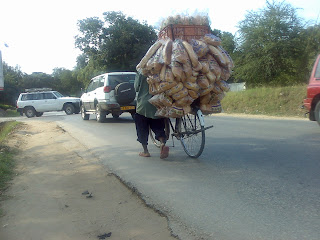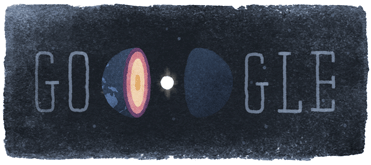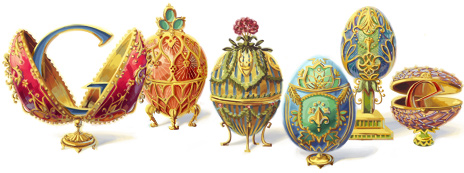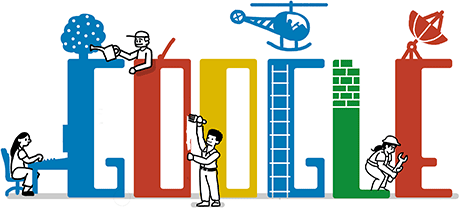Saturday, August 25, 2007
Huyu ni Mtanzania asiyekubali kubaki nyuma katika vitendea kazi

Katika pitapita katika jiji la mkuu wa mkoa anayepata tabu kuwaondoa wapiga debe
Nilikutana na Mtanzania huyu akiwa na digital camera yake na stand ya kisasa aliniambia
kuwa anashugulika na kurekodi kazi za wanamuziki wa kizazi kipya na anajitaidi kazi yake hiwe bomba
ukitaka kumpata yeye binafsi vuta waya kwa namba tigo3-253531
Posted by Unknown at 8/25/2007 09:23:00 PM
Friday, August 24, 2007
Jamhuri ya Muungano wa Tanzania; United Republic of Tanzania


Tanzania
Jamhuri ya Muungano wa Tanzania; United Republic of Tanzania
Last modified: 2006-01-07 by bruce berry Keywords: tanzania Links: FOTW homepage search disclaimer and copyright write us mirrors ,kennedytz
image by Željko Heimer, 28 Mar 2003
National Flag
Flag Construction Sheet
Coat of Arms
Variant of the national flag See also:
Tanzania : national index
National FlagOn 26 April 1964, Tanganyika and Zanzibar merged to form a new republic, the name "Tanzania" being adopted on 29 October 1964. Like the name of the country, the new flag was a merger of that of its constituent parts. The lower green stripe of the former Tanganyika flag took the blue of the Zanzibari flag, and the stripes were re-arranged diagonally to give them equal status. Stuart Notholt, 19 Jun 1996
National Flag. CSW/CSW 2:3 Flag divided by a yellow fimbriated black rising diagonal with green at hoist and blue at fly. Source: Album 2000. The colour specifications are officially provided in British Standard Range, and Armand approximated them in Album as: Green Pantone 361c Yellow Pantone 116c Blue Pantone 299c These are, of course, rather standard shades of colours except for the blue, which is lighter than "normal" blue, but not as light as "light blue". I don't know how much it matches the B.S. standard. Željko Heimer, 28 Mar Yellow2003
Ratio length to breadth: three to two e.g. 3' x 2', 6' x 4', 12' x 8' Description: Green - Yellow - Black and Blue, having the black centre stripe centred on (the) diagonal raising from flag mast to top edge of the fly, two smaller yellow stripes dividing the upper triangle portion which is green and the lower triangle portion which is blue. Proportions of colours: Black centre stripe, centred on diagonal of flag of 6' x 4', is 13/48 of fly and 13" wide (my note - 4 feet = 48 inches). Yellow stripes are each 1/16 of fly and 3" wide. Colour code and significance: B.S. (referring to the British Standard Range of colours now redundant) No. 2660, 1955 Black BS No, 9-103 = the People Green BS No. 0-010 = the Land Blue BS No. 0-012 = the Adjoining Sea BS No. 0-002 = the Mineral Wealth Source: Tanzania National Symbols', Dar-es-Salaam; Information Service Division, Office of the Prime Minister and First Vice-President, (no date). Christopher Southworth, 27 Mar 2003
Flag Construction Sheet image by Željko Heimer, 28 Mar 2003
Summarizing the construction details, the width of the black stripe is 13/48 of the hoist size, the width of the yellow stripes is 3 of the same units each. Željko Heimer, 28 Mar 2003
Coat of Arms image from this site, located by Jarig Bakker, 5 Jan 2002
The Emblem (Nembo) Emblem Description : The central feature of the Coat of Arms is the Warrior’s Shield which bears a portion on the upper part followed underneath by the United Republic flag of Green, Golden, Black and Blue; and a red portion under which are wavy bands of blue and white. Colours Significance: The Golden portion represents minerals in the United Republic; the red portion underneath the flag symbolises the fertile red soil of Africa; while the wavy bands represent the land, sea, lakes and coastal lines of the United Republic. The Shield is set upon a representation of Mount Kilimanjaro. On each side of the Shield there is an elephant tusk supported by a man on the left (as you look at the emblem) and a woman on the right symbolising both the theme of co-operation and gender and equality of the people of Tanzania. At the feet of the man is a clove bush and at the feet of the woman is a cotton bush symbolising agriculture in the Republic. Superimposed features on the Shield are flames of a burning torch which signifies freedom, enlightenment and knowledge; a spear signifying defence of freedom and crossed axe and hoe being tools that the people of the United Republic use in developing the country. The Uhuru Torch symbolises freedom and light. It was first lit on top of mount Kilimanjaro (5,890m) in 1961, symbolically to shine the country and across the borders to bring hope where there is dispair, love where there is enmity and respect where there is hatred. Yearly there is the Uhuru Torch race, starting from different prominent places in the Republic. The United Republic motto: "Uhuru na Umoja" = Freedom and Unity, is written in Kiswahili: the National Language of Tanzania. Info from this website. Jarig Bakker, 5 Jan 2002
Variant of the national flag image by Antonio Martins, 10 Feb 2000
In a list of notes by G. Pasch, made in 1981, he reports an information according to which the lower yellow stripe of the Tanzanian flag would have been changed to a white stripe. Has anybody heard of this? If it actually occurred, how long did it last? It does not seem to be a plain optical mistake, for it is specified that the upper stripe remains yellow. Thanh-Tâm Lê, 10 Dec 1998
I can tell that the national flag that appears as fin flash at Tanzanian airforce planes remain the same since its establishment in 1964, a fact that indicated that there was no flag change. Could it be just a poor manufactured flag? Dov Gutterman, 11 Feb 2000
Jamhuri ya Muungano wa Tanzania; United Republic of Tanzania
Last modified: 2006-01-07 by bruce berry Keywords: tanzania Links: FOTW homepage search disclaimer and copyright write us mirrors ,kennedytz
image by Željko Heimer, 28 Mar 2003
National Flag
Flag Construction Sheet
Coat of Arms
Variant of the national flag See also:
Tanzania : national index
National FlagOn 26 April 1964, Tanganyika and Zanzibar merged to form a new republic, the name "Tanzania" being adopted on 29 October 1964. Like the name of the country, the new flag was a merger of that of its constituent parts. The lower green stripe of the former Tanganyika flag took the blue of the Zanzibari flag, and the stripes were re-arranged diagonally to give them equal status. Stuart Notholt, 19 Jun 1996
National Flag. CSW/CSW 2:3 Flag divided by a yellow fimbriated black rising diagonal with green at hoist and blue at fly. Source: Album 2000. The colour specifications are officially provided in British Standard Range, and Armand approximated them in Album as: Green Pantone 361c Yellow Pantone 116c Blue Pantone 299c These are, of course, rather standard shades of colours except for the blue, which is lighter than "normal" blue, but not as light as "light blue". I don't know how much it matches the B.S. standard. Željko Heimer, 28 Mar Yellow2003
Ratio length to breadth: three to two e.g. 3' x 2', 6' x 4', 12' x 8' Description: Green - Yellow - Black and Blue, having the black centre stripe centred on (the) diagonal raising from flag mast to top edge of the fly, two smaller yellow stripes dividing the upper triangle portion which is green and the lower triangle portion which is blue. Proportions of colours: Black centre stripe, centred on diagonal of flag of 6' x 4', is 13/48 of fly and 13" wide (my note - 4 feet = 48 inches). Yellow stripes are each 1/16 of fly and 3" wide. Colour code and significance: B.S. (referring to the British Standard Range of colours now redundant) No. 2660, 1955 Black BS No, 9-103 = the People Green BS No. 0-010 = the Land Blue BS No. 0-012 = the Adjoining Sea BS No. 0-002 = the Mineral Wealth Source: Tanzania National Symbols', Dar-es-Salaam; Information Service Division, Office of the Prime Minister and First Vice-President, (no date). Christopher Southworth, 27 Mar 2003
Flag Construction Sheet image by Željko Heimer, 28 Mar 2003
Summarizing the construction details, the width of the black stripe is 13/48 of the hoist size, the width of the yellow stripes is 3 of the same units each. Željko Heimer, 28 Mar 2003
Coat of Arms image from this site, located by Jarig Bakker, 5 Jan 2002
The Emblem (Nembo) Emblem Description : The central feature of the Coat of Arms is the Warrior’s Shield which bears a portion on the upper part followed underneath by the United Republic flag of Green, Golden, Black and Blue; and a red portion under which are wavy bands of blue and white. Colours Significance: The Golden portion represents minerals in the United Republic; the red portion underneath the flag symbolises the fertile red soil of Africa; while the wavy bands represent the land, sea, lakes and coastal lines of the United Republic. The Shield is set upon a representation of Mount Kilimanjaro. On each side of the Shield there is an elephant tusk supported by a man on the left (as you look at the emblem) and a woman on the right symbolising both the theme of co-operation and gender and equality of the people of Tanzania. At the feet of the man is a clove bush and at the feet of the woman is a cotton bush symbolising agriculture in the Republic. Superimposed features on the Shield are flames of a burning torch which signifies freedom, enlightenment and knowledge; a spear signifying defence of freedom and crossed axe and hoe being tools that the people of the United Republic use in developing the country. The Uhuru Torch symbolises freedom and light. It was first lit on top of mount Kilimanjaro (5,890m) in 1961, symbolically to shine the country and across the borders to bring hope where there is dispair, love where there is enmity and respect where there is hatred. Yearly there is the Uhuru Torch race, starting from different prominent places in the Republic. The United Republic motto: "Uhuru na Umoja" = Freedom and Unity, is written in Kiswahili: the National Language of Tanzania. Info from this website. Jarig Bakker, 5 Jan 2002
Variant of the national flag image by Antonio Martins, 10 Feb 2000
In a list of notes by G. Pasch, made in 1981, he reports an information according to which the lower yellow stripe of the Tanzanian flag would have been changed to a white stripe. Has anybody heard of this? If it actually occurred, how long did it last? It does not seem to be a plain optical mistake, for it is specified that the upper stripe remains yellow. Thanh-Tâm Lê, 10 Dec 1998
I can tell that the national flag that appears as fin flash at Tanzanian airforce planes remain the same since its establishment in 1964, a fact that indicated that there was no flag change. Could it be just a poor manufactured flag? Dov Gutterman, 11 Feb 2000
Posted by Unknown at 8/24/2007 10:33:00 PM
HAPPY BIRTH DAY BLOGGER LET GOD GIVE U MORE POWER TO HELP PEOPLE

Happy Eighth Birthday!
Today marks Blogger’s eighth birthday! A time for reflection, a time to catch our breath from yesterday morning, and a time to break out the baby picture.Thanks to everyone who has supported us over the past four-fifths of a decade, and thanks especially to you for all the blogs. In honor of our birthday, we have a small present in the form of an iGoogle gadget for Blogs of Note. Click the “Add to Google” button below to put the day’s Blog of Note on your iGoogle homepage.
Today marks Blogger’s eighth birthday! A time for reflection, a time to catch our breath from yesterday morning, and a time to break out the baby picture.Thanks to everyone who has supported us over the past four-fifths of a decade, and thanks especially to you for all the blogs. In honor of our birthday, we have a small present in the form of an iGoogle gadget for Blogs of Note. Click the “Add to Google” button below to put the day’s Blog of Note on your iGoogle homepage.
Posted by Unknown at 8/24/2007 07:16:00 PM
Thursday, August 23, 2007
BIASHARA MBELE USALAMA NYUMA TENA AJARI YA UMEME WA KILOVOLT 11

HII NI HATARI YA DANGER PESA MBELE MAUTI KARIBU HILO BANGO LA MATANGAZO
LINAWEKWA KWENYE KONA YA LALA AWAY MASAKI WAYA ZA UMEME WA VOLT 11000 KARIBU YAKE
SASA WATAPOKUWA WAANAFANYA KAZI YA KUFUNGA VITAMBAA KWA KUTUMIA NGAZI NDIPO HATARI
YA KUFA MTU INAKARIBIA MIMI SISEMI MENGI KWANI USALAMA NI MDOGO WATU WANAJARI NGAWILA
By the end of June 2007, the ILO had adopted 188 Conventions and 199 Recommendations covering a broad range of subjects: freedom of association and collective bargaining, equality of treatment and opportunity, abolition of forced and child labour, employment promotion and vocational training, social security, conditions of work, labour administration and labour inspection, prevention of work-related accidents, maternity protection, and the protection of migrants and other categories of workers such as seafarers, nursing personnel or plantation workers. More than 7,500 ratifications of these Conventions have been registered so far. International labour standards play an important role in the elaboration of national laws, policies and judicial decisions, and in the provisions of collective bargaining agreements. Whether or not a country has ratified a particular Convention, the standards provide guidance for the operation of national labour institutions and mechanisms, and good labour and employment practices. Thus, international labour standards have an impact on both national law and national practice, which goes well beyond simply adapting legislation to the requirements of a ratified Convention.
Information resources
Information resources
Posted by Unknown at 8/23/2007 11:37:00 PM
Foleni za jiji la Mkuu wa mkoa anayejaribu kwavulumisha wapiga debe
Posted by Unknown at 8/23/2007 11:14:00 PM
STUDIO ZA WENZETU HII CHANGAMOTO KWA WALE WANAOTAKA KUANZISHA VITUO VYA TV
Posted by Unknown at 8/23/2007 09:30:00 AM
Wednesday, August 22, 2007
Mambo ya kufuatana karibu ndiyo haya
Posted by Unknown at 8/22/2007 08:42:00 PM
Tuesday, August 21, 2007
Monday, August 20, 2007
Hili JIJI la Mweshimiwa Mkuu wa Mkoa lina yake siku hizi

Hapa jamaa Mwenye nyumba inayoonekana Hapo juu yupo katika ujenzi
Kwani raha ya Ujenzi uzungushe uzio wa bati Sasa wale Askari wa jiji Walipoona Huo uzio
ikawa dili ebwana jamaa waliushumbulia kama nyuki kuuvunjilia mbali na yale mabati
wakayachukua kama kizibiti
bahati wakati tunachukua hizi picha wale wanahabari wa ITV wakatokea kupata picha za karibu
Huyo repota wa itv ni mzuri katika habari za upelelezi kaza buti sudi na cameramen wako
Posted by Unknown at 8/20/2007 11:14:00 PM
Subscribe to:
Comments (Atom)









.gif)



































